Hi Readers: As previously reported in Part I, this is a summary of the January 2008 fatal acidents (both U.S. and non-U.S.) based on the facts available. NTSB is in a continual process of the investigation of accidents, and the probable causes will not be available for some time yet. As stated in Part I, The fatal accidents (more often than not) usually indicate the more serious safety of flight problems and indicate the areas for specific study. The january fatal accidents varied as to time of flight, VFR-IFR meteorological conditions, phase of flight, type of flight operations, pilot classification, proficiency or mission, ad infinitum. There were 22 fatal accidents during the period. Beginning with a fatality-injury count, a 6-fatal Cessna 210M accident on 1-11-08, a day charter flight at Enos airport, Windhaek, Nambia. Engine power was lost on takeoff and the airplane crashed in a residential area. The pilot and the 5 passengers did not survive the crash and post-crash fire. The next, a 4-fatal accident, involved a Cessna 340, operated by a private pilot, impacted terrain in day VFR x-c flight during an approach to R/W27 at Keller Field, Port Clinton, Ohio on the downwind leg of the traffic pattern. The airplane was observed in slow flight to stall and enter a left spin with the landing gear extended. There was some evidence of fuel at the crash site, but both engine propellers were bent rearward indicating lack of power. Weather conditions in the area were reported as VFR. The temperature was 2 degrees C. and the dewpoint temperature was -4 degrees C.
A 6-fatal accident occurred on 1-5-08 when a Piper PA-31-350 impacted ocean water, a loss of control shortly after takeoff from R/W 36 at Kodiak, Alaska in daylight. The flight was a on-demand charter flight of Servant Air, Inc. to transport a group of fishermen from Kodiac to Homer for a Russian Christmas. Many lived in the Homer, Alaska community. A surviving passenger related that the forward baggage door popped open (in the nose) while over the departure end of the runway. The pilot made a shallow right turn, presumably to return to the airport. The baggage door then swung full open. As th e airplane continued the right turn, it rolled sharply to the right and entered a rapid nose-low descent. The airplane disintegrated on impact and sank 200 yards offshore in shallow water. The Kodiak METAR weather report cited wind at 300 degrees, 17 knots with gusts to 26 knots, with the temperature and dewpoint at 46 and 44 degrees C. The air transport pilot and 5 passengers sustained fatal injuries, 3 passengers were seriously injured, and there was one minor injury. Indications are that the opening baggage door resulted in an airfoil problem leading to a stall and loss of control.
A 3-fatal accident occurred on 1-12-08 when a Cessna 172L, piloted by a private pilot, approached the Clearwater airport, Florida for a left downwind for R/W22. In communication with the Tower Controller, the pilot was cleared to land and acknowledged. A witness on the ramp observed the airplane flying at an estimated altitude of 100 feet, then observed a 90-degree bank to the right, followed by a 45-degree roll to the left, followed by a wings level attitude. The airplane was then observed in a 10-15 degree noseup attitude, followed by a stall and a descent in a left, nose-low and erratic attitude. The pilot and 2 passengers were fatally injured.
On 1-12-08 an Italian-registered Piper PA-28 impacted terrain approaching the Treviso, Italy airport under VFR conditions. The pilot and a passenger were fatally injured. On 1-23-08 a U.S. registered and British-operated Beech 58P was destroyed when the airplane impacted water approximately 7 nm north of Cherbourg, France during a day VFR x-c flight. There were 2 fatalities and one serious injury. On 1-15-08 a non-U.S. Beech C-90B, during a day training flight, crashed at Port Said, Egypt. There was a post-crash fire and both pilots were fatally injured. On 1-19-08, an experimental category airplane, an Air Creation Clipper, crashed in desert terrain 8 miles NW of Green Valley, Arizona. The airplane appeared to have descended in a steep nose-down attitude. The student pilot and a flight instructor sustained fatal injuries. On 1-27-08, an amateur-built Free Bird Sportlite 103 impacted terrain near McCullough, Alabama during day flight. The non-certificated pilot was fatally injured. The airplane, a 2-seat tandum, was purchased by the pilot over the internet. A center-of-gravity problem was indicated. The circumstances regarding this airplane was very involved, and the pilot had only 38 hours ground instruction, 25 hours of flight instruction, and had passed a written FAA examination prior to solo.
On 1-16-08 an Air Taxi Aero Commander 500B crashed on a night IFR flight from Tulsa, Oklahoma to the Wiley Post airport following a loss of control after takeoff. The pilot reported that he was having a gyro problem. The airplane was observed on radar, and the pilot was given instructions to turn left to 300 degrees. The pilot initiated a right turn and was informed by Tulsa Approach Control of the mistake. The airplane continued in a steep right turn and disappeared from the radar scope. The weather at the time of the accident was overcast at 1,900 feet, visibility 3 miles in freezing drizzle and snow, temperature 32 degrees F. with winds 300 degrees at 18 knots, gusting to 21 knots. The pilot was fatally injured.
A Hawker Beech 58, on 1-16-08, crashed during a night x-c VFR flight following its climb from Cleveland, Ohio airport, impacting Lake Erie. The airline transport pilot sustained fatal injuries. There were no details. On 1-3-08 a line technician was struck and killed by the moving propeller of a Pilatus PC-12/45 airplane parked on the ramp, awaiting departure, at the Wiley Post airport in Oklahoma City in the early morning hours. The commercial pilot and the 7 passengers aboard were not injured. The airplane was operated by the Cardiovascular Associates, a medical group. A non-U.S. Bell 206B helicopter was destroyed when it impacted terrain under unknown circumstamces near Zuzenhausen, Germany. The passenger was fatally injured and the pilot sustained minor injuries.
All in all, January 2008 was not a good month, with some very bad weather over the continental U.S. We'll hope for an improvement in the month of February. Keep flying - safely.
Thanks for listening. R.S.
Subscribe to:
Post Comments (Atom)

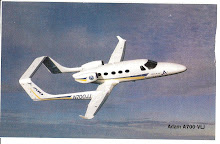

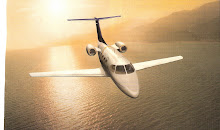


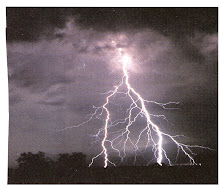

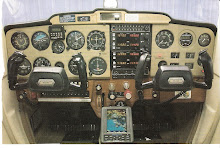
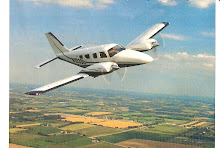
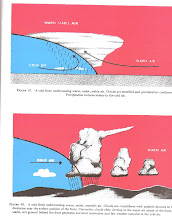
No comments:
Post a Comment